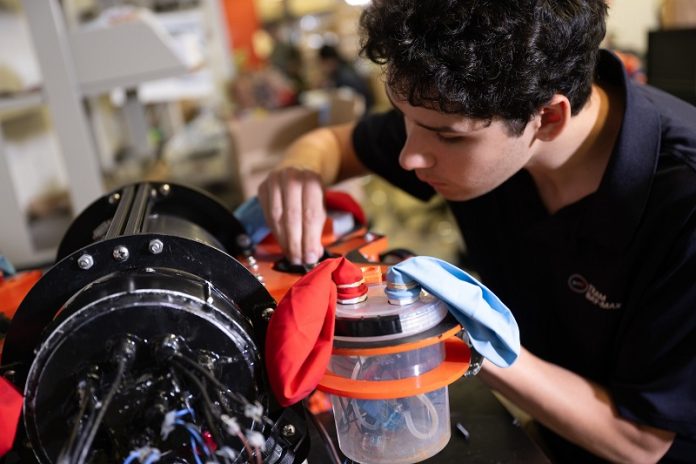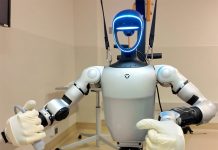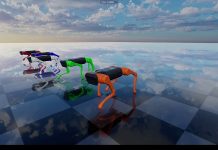
A team of engineering students from Rice University has created a groundbreaking underwater robot that controls its buoyancy through water-splitting fuel cells, presenting a more energy-efficient method for underwater navigation.
The robot, developed as part of a senior design capstone class at the Oshman Engineering Design Kitchen, aims to revolutionize how autonomous underwater vehicles (AUVs) operate, potentially reducing operational costs significantly.
Traditional underwater robots rely heavily on thrusters and large pumps to maintain and change depth, which can be noisy, energy-intensive, and costly.
In contrast, the Rice team’s robot, named “Bay-Max,” uses a quieter and more power-efficient system inspired by a research collaboration involving Rice University and the University of Houston.
This system is based on the concept of electrolysis, where water is split into hydrogen and oxygen gases to adjust the robot’s buoyancy—similar to how fish use their swim bladders to move up and down in water.
The project emerged from the idea of mimicking natural processes, as explained by the team’s sponsor, Professor Fathi Ghorbel of Rice University.
The robot employs reversible hydrogen fuel cells that not only produce hydrogen and oxygen from water but can also recombine these gases to generate power and adjust buoyancy.
This dual functionality allows the robot to ascend or descend with minimal energy use, enhancing its operational efficiency and sustainability.
Team Bay-Max, including students Andrew Bare, Spencer Darwall, Noah Elzner, Rafe Neathery, Ethan Peck, and Dan Zislis, engineered the robot to integrate these technologies seamlessly.
They designed a system that allows the robot to adjust its depth by controlling the volume of gas in balloons connected to the fuel cells.
By applying voltage to the fuel cells, the robot can increase or decrease its buoyancy effortlessly.
The robot also features a sophisticated dashboard developed primarily by team member Noah Elzner, which provides real-time data on the robot’s depth, orientation, and other vital system metrics.
This dashboard is crucial for monitoring and controlling the robot during underwater missions.
The control system is complemented by a joystick, similar to those used in video games, allowing manual control over the robot’s movements.
This feature was part of the extensive learning and adaptation the team underwent, as highlighted by Spencer Darwall, who focused on integrating control theory and software learning into the project.
Bay-Max’s innovative design has not only demonstrated the potential of fuel cell-based buoyancy control systems in reducing energy consumption by up to 85% compared to conventional methods but has also earned the team second place in the Willy Revolution Award for Outstanding Innovation at the annual Huff OEDK Engineering Design Showcase.
The success of the project reflects the team’s cohesive effort and commitment to pushing the boundaries of underwater vehicle technology, showcasing a significant advancement in the field of robotics and engineering.



